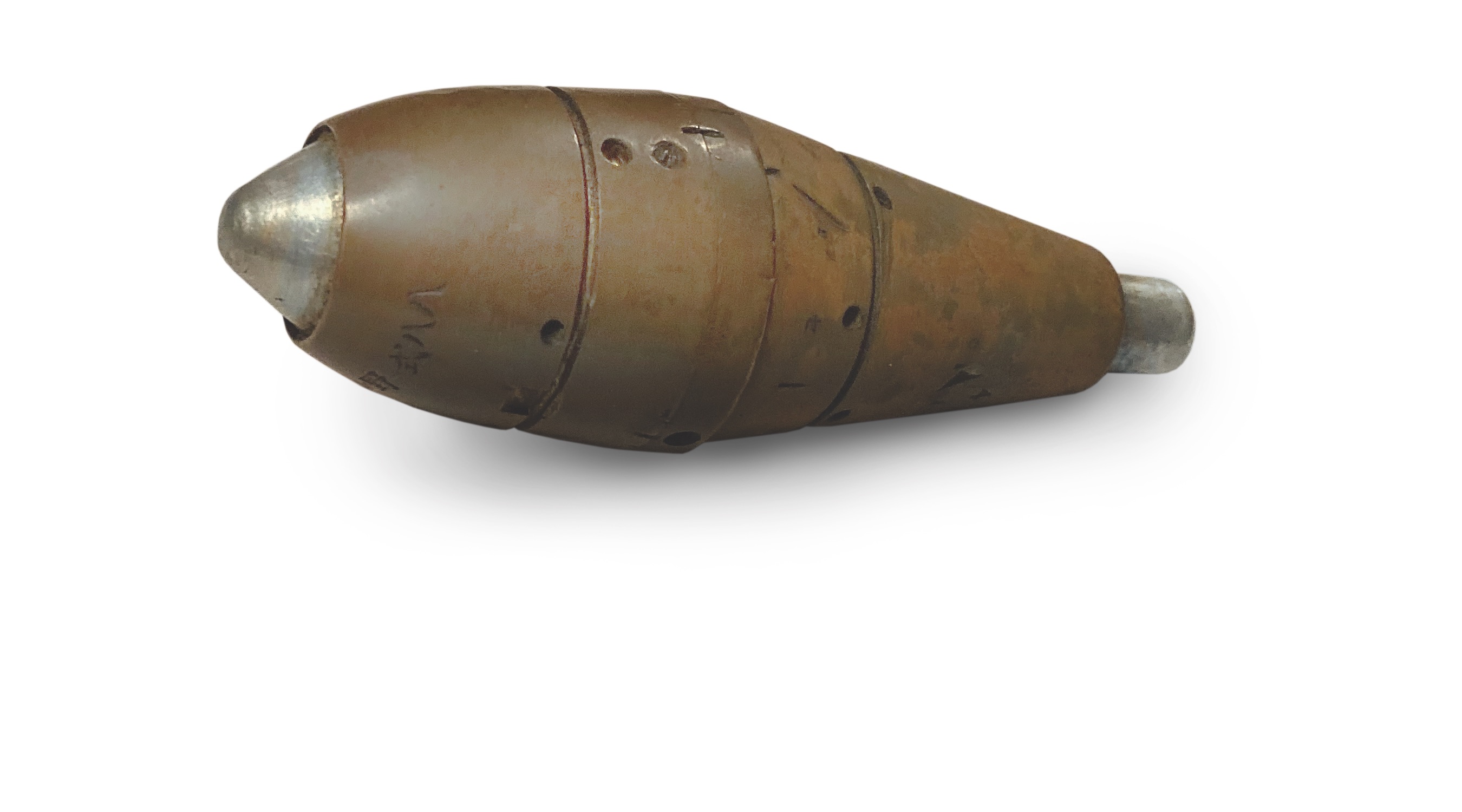Curators at The National World War II Museum solve readers’ artifact mysteries.
My uncle was in the navy and served in the Pacific Theater; this object—which I assume is a Japanese hand grenade or mortar round—was among the items he gave my father. I have seen Japanese fragmentation grenades in museums that look nothing like this item, which is three-and-a-half inches long. Can you confirm what type of weapon this is?
—Mike Hume, Orange, Mass.
Identifying artifacts is often a challenge, particularly if the item has been modified or is incomplete—or both, as in the case of this one.
At first glance, the object looks to be an artillery fuze of some type. Yet artillery fuzes normally have an exposed thread to screw into a projectile; nothing like that is present here. That’s because it seems as though two fuzes have been screwed together—an effort at what I assume to be trench art. The photos show kanji characters on each end; while I cannot read Japanese, I can recognize kanji numbers. The markings indicate that both fuzes, although different from each other, are Type 88s. An internet search shows there were indeed two kinds of Type 88 Japanese fuze: an army type for artillery shells and a navy type for mortar shells.
Further searching turned up several examples that more closely resemble your uncle’s artifact, with the exception that most of them have been fitted with improvised tail fins cut from scrap aluminum, making the whole piece resemble a miniature mortar round. (Actual mortar rounds vary in length but are typically at least one foot long.) That was likely the original intent behind the object we have on hand, with the tail fins either lost over the years or never added. The end result was probably meant as a desk ornament. Certainly an interesting item to identify. ✯
—Tom Czekanski, senior curator and restoration manager
Have a World War II artifact you can’t identify?
Write to Footlocker@historynet.com with the following:
— Your connection to the object and what you know about it.
— The object’s dimensions, in inches.
— Several high-resolution digital photos taken close up and from varying angles.
— Pictures should be in color, and at least 300 dpi.
Unfortunately, we can’t respond to every query, nor can we appraise value.
This article was published in the October 2020 issue of World War II.

